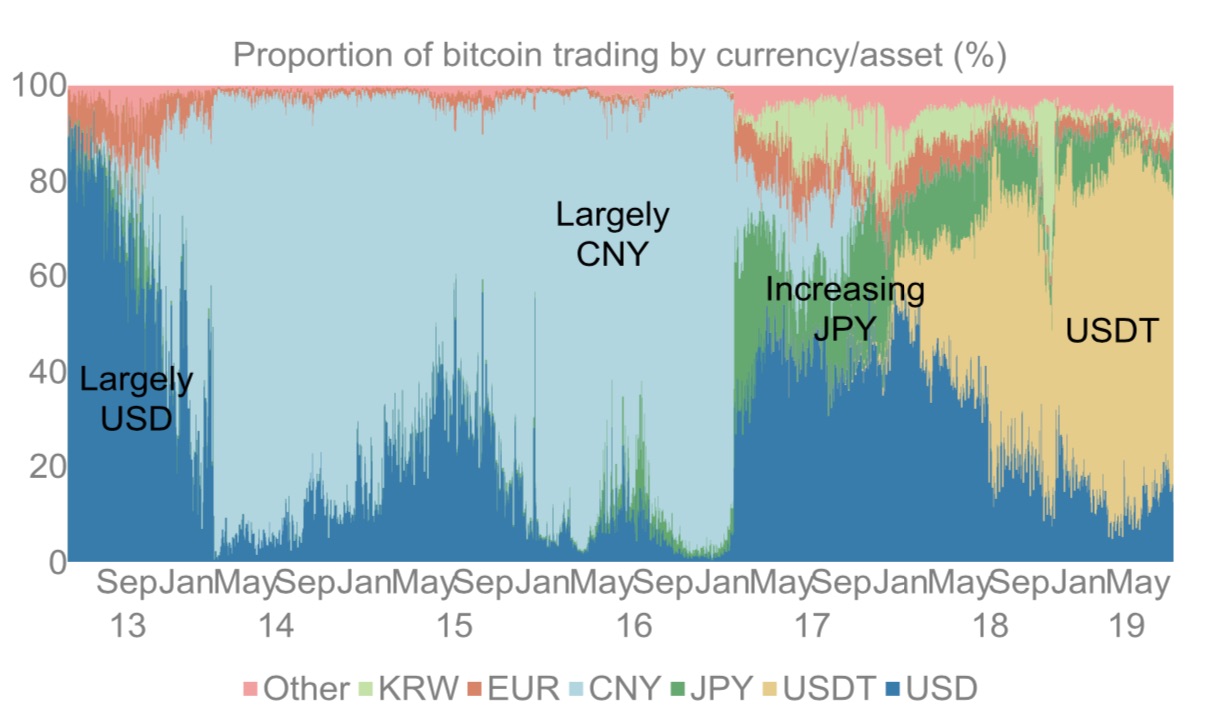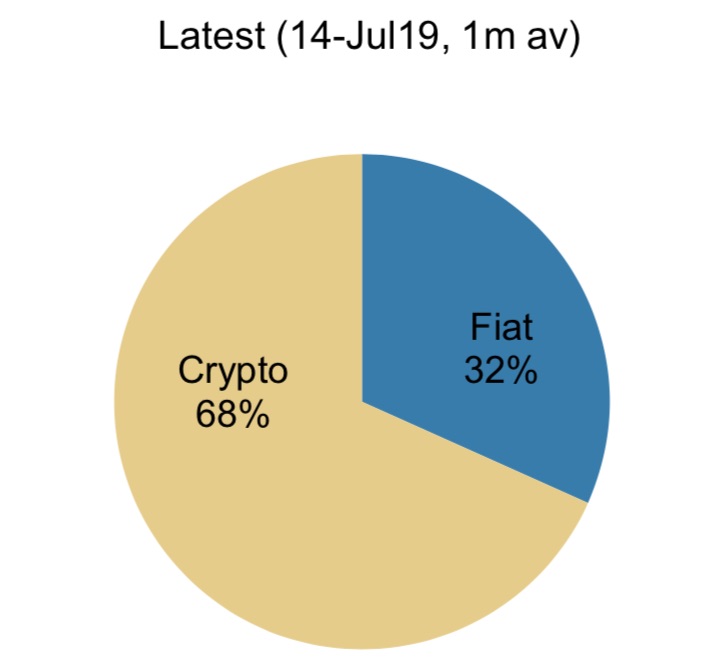Morgan Stanley: Most Bitcoins Are Bought With Tether
Only one third of Bitcoin trades are made against fiat currencies

Share this article
Tether (USDT) is now the most popular asset for buying Bitcoin (BTC), suggesting that the latest rally is fueled by existing rather than new cryptocurrency investors.
In a report published today, U.S. investment bank Morgan Stanley noted a significant increase in the number of Bitcoin trades against Tether. This increase coincided with a proportionate decrease in the number of BTC trades against popular fiat currencies, such as the Chinese renminbi (CNY) or US dollar.
As indicated in the graph below, USDT began to gain volume near the beginning of the 2017 ICO boom. At the time the U.S. dollar had been the most popular trading asset, following a steep decline in CNY transactions earlier that year.
Although bullish regulatory news from Japan has led to a surge in popularity for yen (JPY) transactions since 2017, Tether made the largest gains in BTC volume. After reaching a high point of about 80% earlier this year, USDT dominance has since fallen to about 60%.

Stablecoins provide a fiat-pegged store of value, without exposing investors to the volatility of the rest of the crypto markets. As the legal waters surrounding Tether and Bitfinex became murkier, new issuers have come onto the scene offering different collateralized assets over the past year.
Gemini (GUSD), Circle (USDC) and Paxos Standard (PAX) were all released in late 2018. eToro and Wirex released a flood of new new stablecoins earlier this year, and TrustToken (TUSD) has launched tokens backed by the Euro and British Pound. There’s even a stablecoin based on other stablecoins.
But despite increasing competition and recurring concerns over its reserves, Tether – which accidentally minted $5bn USDT last weekend – remains popular among investors.
A report published earlier this year showed that none of the other collateralized stablecoins managed to capture much of Tether’s market share during last winter’s decline.
Morgan Stanley’s analysts suggested that the surge in Tether’s popularity came from the relative ease of transactions as well as the minimal costs. Investors can easily trade Tether for other cryptocurrencies, faster and cheaper than they could through a different asset class.
Another advantage comes from Tether’s universal presence in the exchange world, where USDT is traded in nearly every marketplace. Tether has more than 400 trading pairs, according to CoinMarketCap; the runner-up, TrueUSD, has only 165.
Overall more than two-thirds of all reported Bitcoin trades in the past month were made through other cryptocurrencies, up from just over a half during Q4 2018. Since Bitcoin is the most common cryptocurrency for first-time investors, the latest rally is most likely fueled by traders who are already invested, rather than new investors entering the space.

In its “Bitcoin Decrypted” report published on November 1st, Morgan Stanley predicted an increase in Bitcoin transactions against Tether. At the time, analysts suggested this was because most exchanges lacked fiat trading pairs, and those that did charged high transaction fees. USDT was not only more accessible, analysts said, it was also the cheaper option.
It also suggests that large investors remain mostly untroubled by the legal issues surrounding Tether. But there is another possible explanation: many Tether skeptics believe unbacked USDT helped raise Bitcoin prices, which would account for the increase in USDT-BTC trades.
Today’s Morgan Stanley report also provides a breakdown on Facebook’s Libra coin as well as the digital asset market in general. In that report, analysts suggested that IEOs are actually retracements to a more centralized issuance model and that close correlations exist between last year’s Bitcoin rally and the Nasdaq composite during the dotcom boom.
Another key finding highlighted that institutional involvement is increasing, while retail investments have stagnated. If the banks’ analysts are correct, this could be the beginning of more institutional adoption for virtual assets.
